#2003 toshiya
Text
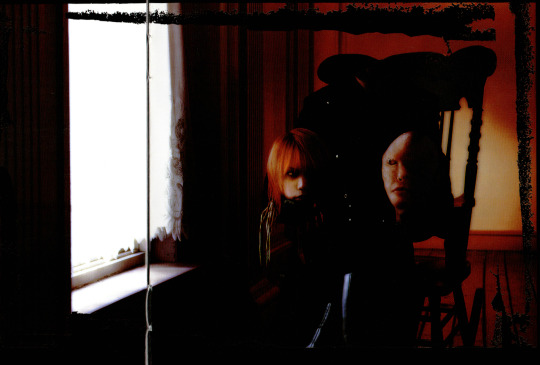
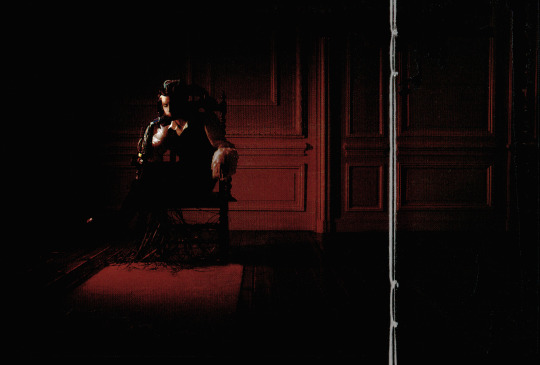

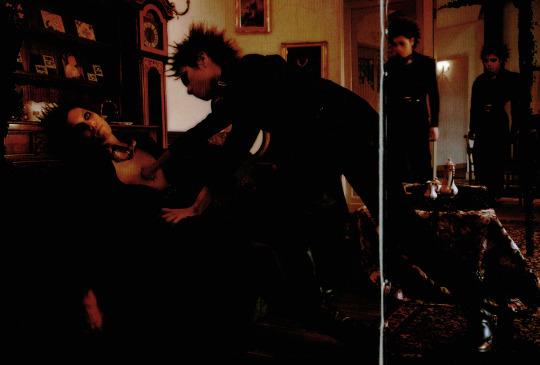
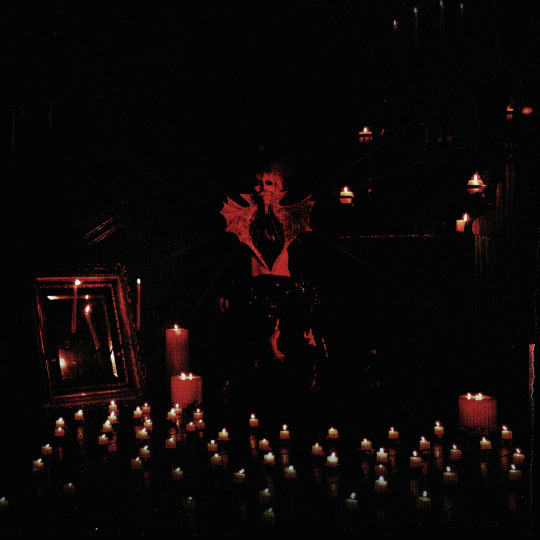
Dir en grey, artist portraits from VULGAR
#my scan#dir en grey#diru#kyo#京#kaoru#薫#die#toshiya#shinya#vulgar#2003#visual kei#vkei#vk#jrock#cd#portraits
379 notes
·
View notes
Text

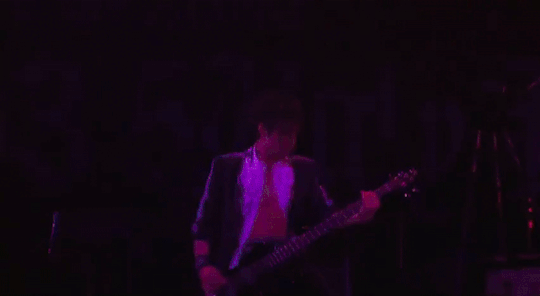
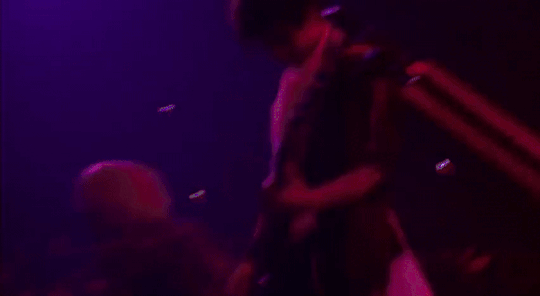
DIR EN GREY - RETTOU GEKISHIN ANGYA FINAL 2003 5 Ugly KINGDOM
↳ Toshiya
Bonus:

#toshiya#dir en grey#y: 2003#s: 5 ugly kingdom tour#b: Killer RD 5st#stb gifs#pic: sourced#fly little bass#t: zomboid
66 notes
·
View notes
Text
youtube
今日の京は、
残 (Zan) (1999) - Dir en Grey
#kyo of the day#dir en grey#dir en grey kyo#dir en grey kaoru#dir en grey die#dir en grey toshiya#dir en grey shinya#2003#BLITZ 5 DAYS#Youtube
2 notes
·
View notes
Text
Does anyone know what necklace is he wearing in this photo? Please tell me if you do because I've been searching for months but didn't find anything :')

7 notes
·
View notes
Text


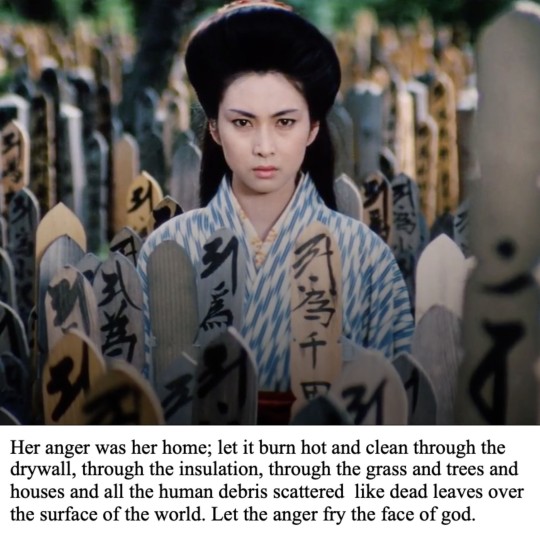


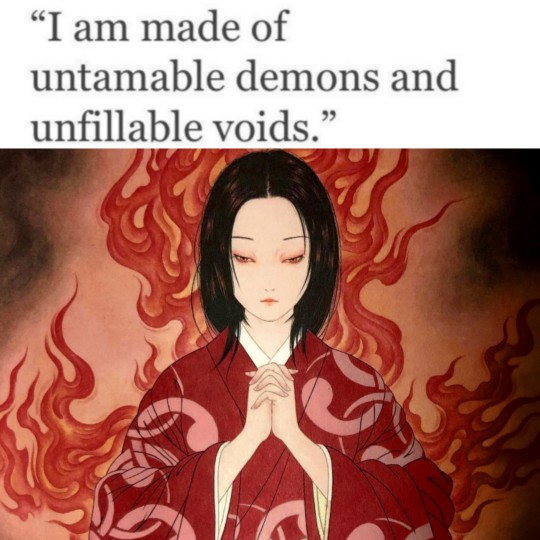




"Buried", Not a girl, Ashe Vernon//Death of Sappho (1881), Miguel Carbonell Selva//Vengeance is Sworn (1851), Francesco Hayez//Plainwater, Anne Carson//The Unequal Marriage (detail), Vasili Pukirev (editor unknown)//Vesuvius, Amber Sparks//Lady Snowblood 2: Love Song of Vengeance (1974), Toshiya Fujita//Furious, Jade Bird//Lady Snowblood (1973), dir. Toshiya Fujita//David Foster Wallace//Mitski//Ira V Simon//Candle Clock Aflame, Takato Yamamoto//Tjawangwa Dema//Emily Carey and Olivia Cooke as Alicent Hightower in House of the Dragon//safia elhillohome is not a country; “haitham”//Monstrous Flesh: On Women’s Bodies in Horror, Rebecca Harknis-Cross//Kill Bill vol.1 (2003), Quentin Tarantino
#rage#fury#anger#revenge#bloodthirst#web weaving#quotes#words#poetry#mine#female rage#kill bill#beatrix kiddo#blood tw#toshiya fujita#lady snowblood#house of the dragon#hotd#alicent hightower#emily carey#olivia cooke#uma thurman#anne carson#takato yamamoto#ashe vernon#francesco hayez#miguel carbonell selva#tjawangwa dema#burn#burning
606 notes
·
View notes
Text


Lady Snowblood (1973), dir. Toshiya Fujita & Kill Bill (2003), dir. Quentin Tarantino
43 notes
·
View notes
Text
20 Years of Quentin Tarantino’s Brilliantly Bloody Kill Bill: Vol 1
Defined by its killer soundtrack, striking visual design and engaging, unforgettable characters, acclaimed filmmaker Quentin Tarantino’s senior feature Kill Bill: Vol 1 made its breathtaking debut on October 10th, 2003 and has culminated in persistent acclaim and adoration since. An American love letter to the classic Japanese martial art and Jidaigeki (period) works, especially Toshiya Futija’s 1937 masterpiece Lady Snowblood, the film features the dazzling casting choice in the amazingly talented Uma Thurman as The Bride. Thurman’s role is a mysterious assassin who seeks revenge on her former group of assassins after they left her and her unborn child for dead during her wedding reception. The first installment in the two-part project, which Tarantino considers one whole film himself, sees The Bride travel to Tokyo to take down the viciously skilful yakuza.
As mentioned, Tarantino’s work took the film industry by storm after its October 2003 release. Thanks to its brilliantly executed plot and action-packed sequences with an overall blend of impassioned drama, it attracted countless critical acclaim and audience praise and grossed over $180 million worldwide having been made from a $30 million budget. This turn out makes it one of the director’s biggest successes and highest-grossing weekends. Furthermore, the first volume of Kill Bill rightfully holds an unmovable status in American film. It exists as a work that defines the Western take on the medium as combining thrills with drama and intense character examinations. Tarantino’s writing never misses, pacing the fight/kill scenes alongside the dialogue-driven ones that display character motivation and progression. It additionally offers witty quips to add a dark comedic tone to overall atmosphere of brutality and violence, showcasing the versatility that has helped cement Kill Bill: Vol 1 in the cinephile psyche.
It’s visual design demonstrates some stark and stylised iconography, from costuming to choreography. First of all, The Bride’s iconic yellow and black tracksuit borrowed artistic influences from Bruce Lee’s attire in the 1972 incomplete film Game of Death, written, directed and produced by the martial arts icon himself. Here, Tarantino pays further tribute to the martial art works that inspired his love for watching and creating cinema in every little detail in his own work that are artistically inspired by the efforts of those who defined the cinematic genre. From visual to audio quality, the infamous sound design of alerting sirens which are embedded into the score every time The Bride faces an opponent have become a pop and film culture phenomenon. This stylistic trademark has been replicated and immediately recognised in subsequent films that go on to pay tribute to the work Tarantino created as an act of appreciation himself.
Furthermore, Kill Bill: Vol 1 is also a bold and ambitious execution of Tarantino’s artistic staple of excessive and graphic violence that strays away from gory shock value seen in most modern horror. The feature makes use of buckets on buckets of blood as limbs are shredded off the body and torsos are slashed open by The Bride’s attentive sword work and passion for revenge. This is most evident in the brilliantly tense and climatic climax which sees The Bride take on the Crazy 88, an elite group of masterfully trained fighters against dreamy blue landscapes that illuminate the characters’ shadows during battle. Once we see the fight in the forefront, we are astounded and sometimes repulsed by how each severment of a limb triggers an ongoing spurt in blood. Each spurt immediately follows the other before in some sort of gruesome rhythm until the redness takes up the screen.
This quest for revenge mirrors a hidden desire audiences suppress and, in the case of Kill Bill’s unforgettable protagonist, a brutal and extreme display of ‘feminine rage’. This cinematic notion is structurally characterised as a strive to be heard and fulfilled on a woman’s part, executed by intense and “unfeminine” outbursts of repressed emotion from screaming to physical conflict. As a brilliant female lead dignified with a profound backstory and layered depiction as conveyed in a terrific performance, The Bride is introduced in the first installment as working under a more serene and controlled demeanour that covers her festering feminine rage. Despite a powerful taste for blood leading her every move, the character remains unflustered throughout the narrative, even when she’s engaging in prolonged violent combats and kills. This accentuates her layered characterisation because it offers a harmony between her rageful quest for vengeance and her collected sense.
The character reads as a thorough and detailed portrayal of how there is no force nastier and more persistent than a scorned woman, with audiences relishing in her journey of executing “an eye for an eye” (a more fitting analogy in the sequel). She lets nothing stand in her way of getting revenge and leaves a bloodbath in her wake with hardly a bat of an eye. Through this graphic rhythm of violence interjected into her emotional backstory, The Bride as a central woman in film challenges conventional tropes of a more “well-behaved” and approachable cinematic leading woman. It’s virtually impossible not to immediately align with Thurman’s character and support her. Audiences recognise, understand and resonate with her backstory, identifying the severe betrayal she was a victim of. The unapologetic aggression The Bride showcases in this film is something many women connect to, with many critics suggesting they come to fantasise about doing the same to those (possibly men) who have wronged and scorned them.
Two decades on, Kill Bill: Volume 1 is appreciated as a masterful visual work that encompasses compelling cinematography to showcase its unique character writing and stark violence. It’s thrilling from opening to conclusion with a perfect structural and tonal disposition between the emotive drama, dark comedy and explicit violence. Tarantino’s directing skills that convey thorough character development, memorable iconography and immersive action allow for both compelling expressiveness and decorative appeal, appeasing audience’s need for stimulation and entertainment. Such artistry and storytelling are cherished by cinema lovers, leading to Kill Bill: Volume 1’s everlasting status in film.
youtube
#kill bill#kill bill vol. 1#quentin tarantino#bellatrix kiddo#uma thurman#cinema#film#film analysis#film critic#classic#american film#2000s cinema#movie#Youtube
3 notes
·
View notes
Text
LADY SNOWBLOOD

Japanese sword swaggering samurai movies have fascinated me since my late teens. I am now 75, and I state my age for context, but as much as enjoy these movies, they have always baffled me. Vengeance, it seems (to me), is an obligation of honor, particularly pronounced in the two flicks I am presenting to you now. The movies are good, not exceptional, however. Another item I enjoy about these films are women sanarais. The way they carry themselves in general, in undulating kimono while swaying the katana, seems poetic to me, it gives these movies another intrinsic character.
I recommend both movies that I have brought to you in this blog, but only if you are a fan. Movies are English subtitled and you have to have knack for this type of watching and film.

Lady Snowblood is a 1973 Japanese jidaigeki film directed by Toshiya Fujita and starring Meiko Kaji. Based on the manga series of the same name by Kazuo Koike and Kazuo Kamimura.

The film recounts the tale of Yuki (Kaji), a woman who seeks vengeance upon three of the people who raped her mother and killed her half brother. The film's narrative is told out of chronological order, jumping between present and past events. Alongside Kaji, the film's cast includes Toshio Kurosawa, Masaaki Daimonm, Miyoko Akaza, and Kō Nishimura. Lady Snowblood (film) - Wikipedia
IMdB: 7'6 ACTION / CRIME / DRAMA DURATION: 1h 37min
904-1 https://ok.ru/video/4809139686070
Lady Snowblood (1973) spawned a sequel, Love Song of Vengeance (1974), that follows.
Lady Snowblood served as a major inspiration for the 2003 Quentin Tarantino film Kill Bill and its lead character, The Bride.
THE SEQUEL

Lady Snowblood: Love Song of Vengeance is a 1974 Japanese film directed by Toshiya Fujita and starring Meiko Kaji. It is a sequel to the 1973 film Lady Snowblood, itself an adaptation of the manga series of the same name by Kazuo Koike and Kazuo Kamimura. Lady Snowblood: Love Song of Vengeance - Wikipedia
IMdB: 6'3 DRAMA / SUSPENSE DURATION: 1h 29min
904-2 https://ok.ru/video/3857091070600
Following is the link to the comic that you can see on line:

LINK: Lady Snowblood chapter 1 - Read Manga Online (mangafire.to)


0 notes
Photo

Meiko Kaji in Lady Snowblood (Toshiya Fujita, 1973)
Cast: Meiko Kaji, Toshio Kurosawa, Ko Nishimura, Masaaki Daimon, Miyoko Akaza, Eiji Okada, Sanae Nakahara, Noboru Nakaya. Screenplay: Norio Osada, Kazuo Kamimura, Kazuo Koike. Cinematography: Masaki Tamura. Production design: Kazuo Satsuya. Film editing: Osamu Inoue. Music: Masaaki Hirao.
An often fascinating, often grisly tale, based on a popular manga, of a woman not only born but conceived to take revenge for her mother's rape and her family's murder. Among other things, it's an acknowledged source for Quentin Tarantino's Kill Bill: Vol. 1 (2003).
1 note
·
View note
Text
LADY SNOWBLOOD (1973) – Episode 172 – Decades Of Horror 1970s
“You’ve made an unbreakable vow. In the name of vengeance, you must foreswear all human emotions, all love and hate, everything.” Your basic all-inclusive vow, then? Got it. Join your faithful Grue Crew – Doc Rotten, Chad Hunt, Bill Mulligan, and Jeff Mohr – as they check out the major influence for Tarantino’s Kill Bill Duology, Lady Snowblood(1973).
Decades of Horror 1970s
Episode 172 – Lady Snowblood (1973)
Join the Crew on the Gruesome Magazine YouTube channel!
Subscribe today! And click the alert to get notified of new content!
https://youtube.com/gruesomemagazine
Synopsis: A young woman is trained from birth to be a deadly instrument of revenge against the swindlers who destroyed her family
Director: Toshiya Fujita
Writers: Norio Osada (screenplay); Kazuo Kamimura (manga illustrator) & Kazuo Koike (manga writer)
Cinematographer: Masaki Tamura
Selected cast:
Meiko Kaji as Yuki Kashima (“Lady Snowblood”)
Mayumi Maemura as young Yuki
Kō Nishimura as Dōkai the priest
Toshio Kurosawa as Ryūrei Ashio
Masaaki Daimon as Gō Kashima
Miyoko Akaza as Sayo Kashima
Eiji Okada as Gishirō Tsukamoto
Sanae Nakahara as Okono Kitahama
Noboru Nakaya as Banzō Takemura
Takeo Chii as Shokei Tokuichi
Hitoshi Takagi as Matsuemon
Akemi Negishi as Tajire no Okiku
Yoshiko Nakada as Kobue Takemura
Rinichi Yamamoto as Maruyama
Lady Snowblood, the horror-adjacent inspiration for Tarantino’s Kill Bill: Vol. 1 (2003) & Kill Bill: Vol. 2 (2004), is Jeff’s pick and he loves this movie, describing it as a visual feast with a non-traditional story structure incorporating Japanese culture and history. It is so much fun!
Seeing Lady Snowblood for the first time with excellent visual quality, Bill is completely absorbed in the film. He was already familiar with the lead actress, Meiko Kaji, from Female Prisoner Scorpion: Jailhouse 41 (1972), which he also loved, and he loves her performance. It’s the kind of performance the viewer can read a lot into. He describes the character and Kaji’s performance as a female version of Clint Eastwood’s “man with no name.”
This is Doc’s first time watching Lady Snowblood and he falls in love with the movie. The simple story with an interesting structure, amazing sound effects, plenty of gore for the gorehounds out there, and the great screen presence of the lead actress all contribute to him cherishing every moment of Lady Snowblood.
You’ve probably guessed by now that the Decades of Horror 70s Grue Crew heartily recommend Lady Snowblood. At the time of this writing, it is available to stream from HBOmax, the Criterion Channel, and various PPV sources. In terms of physical media, it is available in The Complete Lady Snowblood (The Criterion Collection) [Blu-ray], which also includes Lady Snowblood 2: Love Song of Vengeance (1974). And if you are as infatuated with the acting of Meiko Kaji, you might want to check out her Female Prisoner series – Female Prisoner #701: Scorpion (1972), Female Prisoner Scorpion: Jailhouse 41 (1972), Female Prisoner Scorpion: Beast Stable (1973), and Female Prisoner Scorpion: #701’s Grudge Song (1973) – all of which are currently available to stream from Shudder.
Gruesome Magazine’s Decades of Horror 1970s is part of the Decades of Horror two-week rotation with The Classic Era and the 1980s. In two weeks, the next episode in their very flexible schedule, chosen by Bill, will be The Golden Voyage of Sinbad (1973. Ray Harryhausen, Caroline Munro, John Phillip Law, Takis Emmanuel, Tom Baker, Robert Shaw, and the usual assortment of stop-motion animation creatures? Oh yeah!
We want to hear from you – the coolest, grooviest fans: comment on the site or email the Decades of Horror 1970s podcast hosts at [email protected].
Check out this episode!
0 notes
Text







Dir en grey, TOUR03 OVER THE VULGAR SHUDDER Stickers
2003
#my scan#dir en grey#diru#kyo#京#kaoru#薫#die#toshiya#shinya#tour03#over the vulgar shudder#2003#visual kei#vkei#vk#jrock#portraits#stickers
73 notes
·
View notes
Text

DIR EN GREY - TOUR03 OVER THE VULGAR SHUDDER
↳ Edwards E-FV-103B spotted!
#kaoru#toshiya#dir en grey#y: 2003#s: TOUR03 OVER THE VULGAR SHUDDER#g: ESP Ganesa#b: Edwards E-FV-103B#m: HnG 022#my scans#pic: sourced#i'm over the moon to have found this tiny pic of the elusive flying-v lookalike :')#stb scans
35 notes
·
View notes
Text
youtube
今日の京は、
Bottom of the Death Valley (2002) - Dir en Grey
#kyo of the day#dir en grey#dir en grey kyo#dir en grey kaoru#dir en grey die#dir en grey toshiya#dir en grey shinya#2003#the 2013 version's good. i like this version way better though#Youtube
2 notes
·
View notes
Text

I don't know how to stay tender with this much blood in my mouth
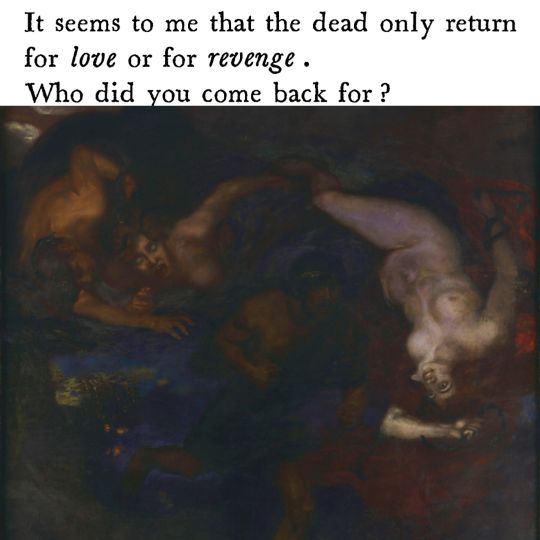
What else can my hands do with the blood? Pray?








Everything I've ever let go of has claw marks on it
Lucretia (1664), Rembrandt van Rijn//Hamlet, Ophelia, Act IV, Scene V//White Is for Witching, Helen Oyeyemi//Franz von Stuck//All the wrong colours, Yrsa Daley-Ward//Medea, Euripides//Circe invidiosa, John William Waterhouse//Ellen Terry as Lady Macbeth (1906), based on a work of 1889, replica by John Singer Sargent//Nightmare, Halsey//Monstrous Flesh: On Women’s Bodies in Horror, Rebecca Harknis-Cross//An Oresteia, Anne Carson//Kill Bill vol.1 (2003), Quentin Tarantino//Vesuvius, Amber Sparks//Buried, Ashe Vernon//Lady Snowblood 2: Love Song of Vengeance (1974), Toshiya Fujita
#mine#web weaving#quotes#words#poetry#anger#fury#rage#revenge#blood#violence#claws#teeth#medea#circe#lady macbeth#lady snowblood#beatrix kiddo#kill bill#the bride#erinyes#furies#on female rage#vengeance#euripides#anne carson#halsey#helen oyeyemi#lucretia#nightmare
326 notes
·
View notes
Text







DIR EN GREY - OBSCURE [PV] (BLITZ 5 DAYS VER.)
#dir en grey#not a movie#music video#image#2003#kyo#die#toshiya#heavy metal#extreme metal#japanese metal#concert#music video stills#black and white#b&w aesthetic#mine*
107 notes
·
View notes



